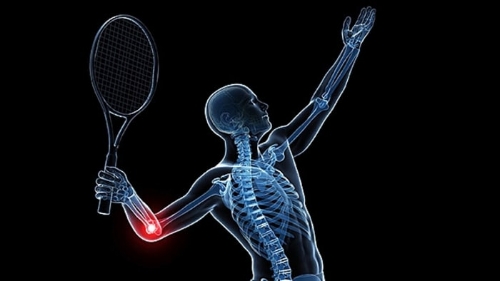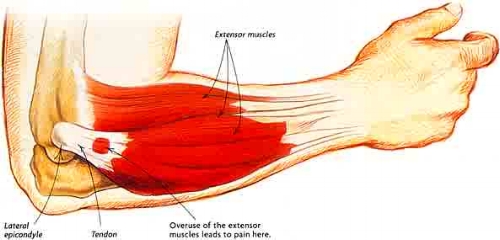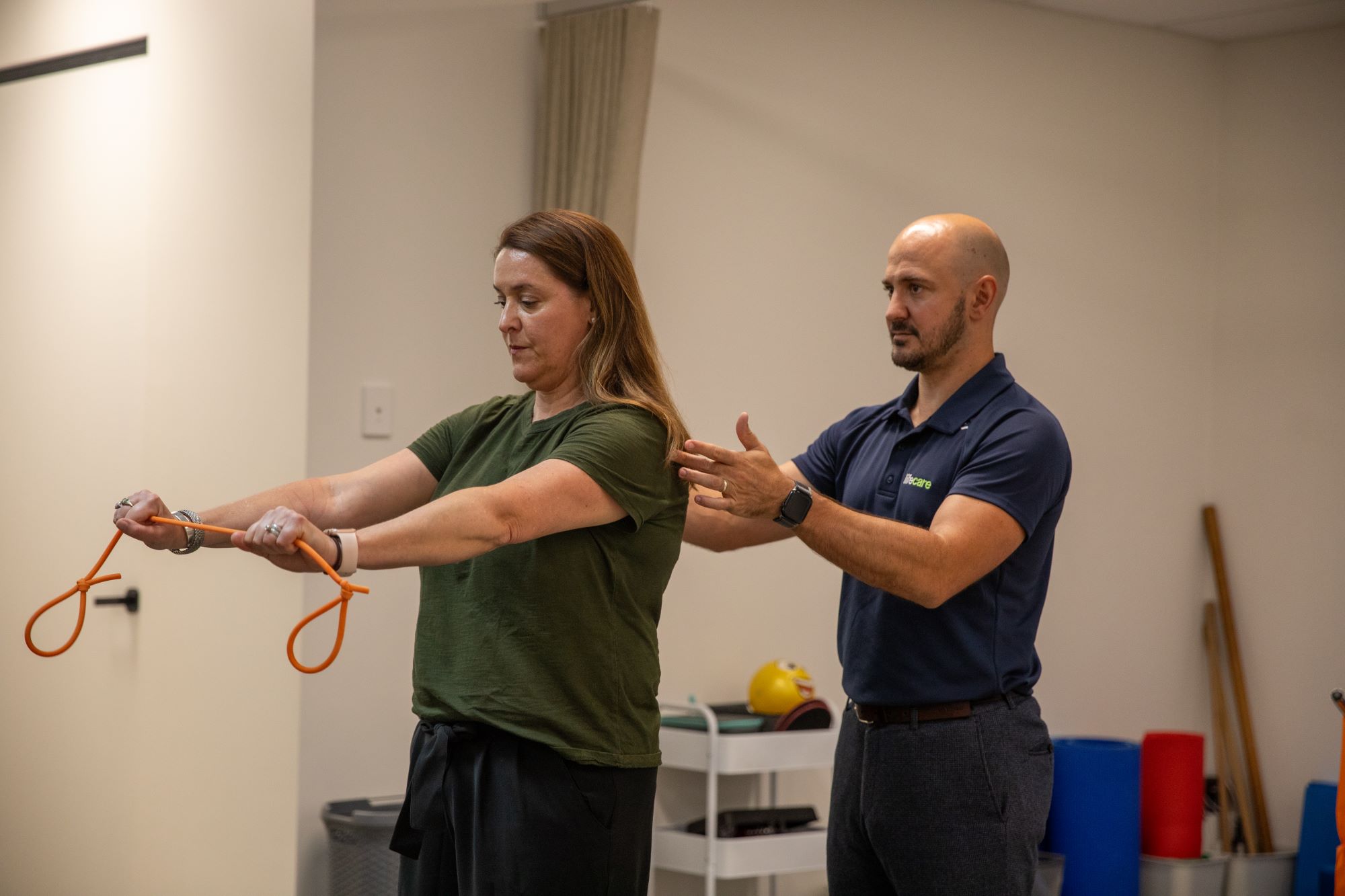Lifecare Kingsway Physiotherapy.
Tennis elbow is a very common injury in both sporting and non sporting populations.
Also known as lateral epicondylagia, the condition is specific to the outside edge of the elbow.
Pain is produced with overuse of the muscles in the forearm causing strain on the central tendon at the elbow.
This results in sharp, long lasting pain associated with gripping items such as a racket, hammer, screwdriver or lifting a shopping bag.

Tennis elbow occurs in sportsmen and non-sports people alike.
It was called tennis elbow due to its common occurrence in tennis players.
Unlike regular muscular strains, tendon injuries do not respond well to generalised rest and inactivity.
In fact, leaving tendon injuries to rest and settle for a period of time only delays the healing process and extends the experience of discomfort.
Like a rubber band, the fibres of collagen that make up tendons stretch and spring like rubber.
If you over stretch the fibres, the collagen breaks, tears and bleeds causing pain and discomfort.
On the other hand, if you keep the fibres still and don’t stretch them enough they become stiff and are easier to break apart once you stretch the tendon again.
Therefore, it is important to use the tendon just enough to keep it springy and elastic like a healthy rubber band.
The trick with restoring tendon health lies in what you do with it.
The amount of stress or load the tendon is exposed to is the biggest factor to how well it heals.
It doesn’t matter so much as to how big or how small the strain is, what’s more important is how much load the tendon can tolerate before reproducing the pain symptoms.
Muscle contractions pull on the tendon every time the finger or the wrist moves, exposing the tendon to minor amounts of stress.
Repetitive movement of the fingers and wrist for a long period of time increases the amount of stress experienced by the tendon called load.
Higher than normal loads over a short or extended period of time can lead the tendon to strain and aggravate the problem.

Muscles from the wrist, hand and finger all attach on the outside of the elbow.
Repetitive pressure with movement of these muscles aggravate the tendon over time.
Normal load can be restored following injury with consultation from your physiotherapist.
They can identify a baseline level of load that your tendon can handle and slowly increase your tolerance to it with manual therapy and exercise. In some cases, braces or time off work may be necessary to control your initial symptoms before you can begin exercise.
It is important you discuss with your physio what your goals are so the treatment is directed towards what you want, not just what the physio thinks is normal.
This is particularly important for people who work with their hands such as trades people or sportsmen alike.
If you would like to consult a physiotherapist about your elbow pain, call the team at your local Lifecare practice or book online.

